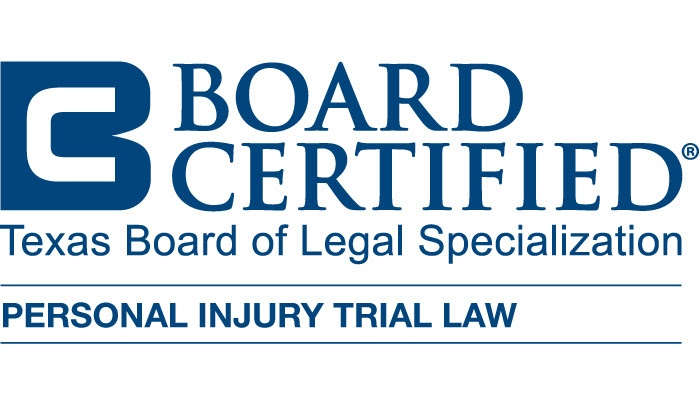In Texas, pedestrian accidents often result in severe injuries due to the vulnerability of individuals compared to the vehicles involved. These accidents can lead to complex legal disputes, particularly when it comes to determining fault. A crucial concept in resolving these disputes is comparative negligence. Understanding how comparative negligence impacts pedestrian cases in Texas can help those involved navigate the legal landscape and pursue fair compensation for their injuries.


The Basics of Comparative Negligence
Comparative negligence is a legal doctrine used to allocate fault among parties involved in an accident. In Texas, the modified comparative negligence rule is applied. This means that an injured party can recover damages only if they are found to be less than 51 percent at fault for the accident. If a pedestrian is found to be 51 percent or more responsible for their injuries, they cannot recover any compensation from other parties involved.
When a pedestrian accident occurs, the actions of both the driver and the pedestrian are scrutinized to determine each party’s level of fault. For instance, if a pedestrian was jaywalking at the time of the accident, this behavior might be considered negligent and factored into the overall assessment of fault. Similarly, if a driver was speeding or distracted, their actions would also be evaluated. The percentage of fault attributed to each party directly influences the amount of compensation the injured pedestrian can receive.
Determining Fault in Pedestrian Accidents
The process of determining fault in pedestrian accidents involves a thorough investigation. This includes collecting evidence such as traffic camera footage, witness statements, police reports, and any other relevant documentation. Both parties’ behaviors leading up to the accident are analyzed to establish a clear picture of what happened.
For example, if a pedestrian was crossing the street within a marked crosswalk and had the right of way, the driver would likely bear a higher percentage of fault if they failed to yield. Conversely, if the pedestrian crossed the street outside of a designated crosswalk or against a traffic signal, they might share a greater portion of the fault. Each case is unique, and the specific circumstances surrounding the accident play a critical role in the determination of fault.
My focus is to give a voice to families who have suffered a wrongful death or a serious injury to a family member caused by an 18-Wheeler, commercial truck, or a drunk driver. Contact us today, we can help you.Helping Injury Victims for Over 25 Years
Impact of Comparative Negligence on Compensation
In Texas, the amount of compensation a pedestrian can receive is directly impacted by their percentage of fault. Under the modified comparative negligence rule, the total damages awarded to the injured party are reduced by their percentage of fault. For example, if a pedestrian is awarded $100,000 in damages but is found to be 30 percent at fault for the accident, their compensation would be reduced by 30 percent, resulting in a final award of $70,000.
This reduction in compensation underscores the importance of accurately determining fault in pedestrian cases. Pedestrians must be aware of their actions and how they might be perceived in the context of the accident. It is essential to provide clear and compelling evidence to minimize their percentage of fault and maximize their potential compensation.
Challenges in Proving Negligence
Proving negligence in pedestrian accidents can be challenging. Pedestrians often face biases that favor drivers, and establishing fault requires meticulous attention to detail. Legal representation becomes crucial in these cases, as experienced attorneys can help gather evidence, interview witnesses, and build a strong case to support the pedestrian’s claim.
One of the key challenges is overcoming the perception that pedestrians are always at fault. Drivers and their insurance companies might argue that the pedestrian’s actions contributed significantly to the accident. This is where the experience of an attorney comes into play. They can counter these arguments by presenting evidence that highlights the driver’s negligence or other contributing factors.
Related Videos
Choosing a Personal Injury Attorney
Types of Compensation in a Truck Accident Claim
The Role of Traffic Laws
Traffic laws play a significant role in determining fault in pedestrian accidents. Texas has specific laws governing pedestrian crossings and right-of-way. Pedestrians are generally required to use crosswalks and obey traffic signals. Drivers, on the other hand, are expected to yield to pedestrians in crosswalks and exercise caution in areas where pedestrians are likely to be present.
When a pedestrian accident occurs, the adherence to these traffic laws is scrutinized. If a pedestrian was following the law and the driver failed to yield, the driver would likely be found more at fault. Conversely, if the pedestrian violated traffic laws, their percentage of fault would increase. Understanding and adhering to traffic laws is crucial for both drivers and pedestrians to minimize the risk of accidents and subsequent legal disputes.
Comparative Negligence in Court
In court, comparative negligence is a critical factor in pedestrian accident cases. Both parties present their evidence and arguments, and the jury or judge determines the percentage of fault for each party involved. This process can be complex, as it involves analyzing various aspects of the accident, including the actions of both the pedestrian and the driver.
The outcome of a pedestrian accident case can significantly impact the injured party’s ability to recover damages. If a pedestrian is found to be partially at fault, their compensation is reduced accordingly. Therefore, having strong legal representation is essential to effectively present the case and ensure that fault is accurately assigned.
Insurance and Settlement Negotiations
Insurance companies play a significant role in pedestrian accident cases. They often conduct their own investigations to determine fault and assess the potential payout. In many cases, insurance companies might try to minimize their liability by attributing a higher percentage of fault to the pedestrian. This can lead to contentious settlement negotiations.
During settlement negotiations, both parties’ legal teams present their evidence and arguments. The goal is to reach a fair settlement that reflects the true extent of each party’s fault. An experienced attorney can advocate for the injured pedestrian, ensuring that the settlement offer accurately reflects their level of fault and the damages they have suffered.
Importance of Legal Representation
Navigating the complexities of comparative negligence in pedestrian accident cases requires legal experience. Pedestrians who have been injured in accidents need attorneys who understand the nuances of Texas negligence laws and can effectively represent their interests. Legal representation can make a significant difference in the outcome of a case, from determining fault to negotiating fair settlements.
Attorneys with experience in pedestrian accident cases can provide invaluable guidance throughout the legal process. They can help gather and present evidence, negotiate with insurance companies, and advocate for their clients in court if necessary. The goal is to ensure that injured pedestrians receive the compensation they deserve while minimizing their percentage of fault.
Steps to Take After a Pedestrian Accident
After a pedestrian accident, it is crucial to take immediate steps to protect one’s rights and build a strong case. Seeking medical attention is the top priority, as injuries sustained in pedestrian accidents can be severe. Documenting the accident scene, gathering contact information from witnesses, and filing a police report are also important steps.
Consulting with an attorney as soon as possible is highly recommended. An attorney can provide guidance on how to proceed, help gather evidence, and represent the injured pedestrian’s interests. Early legal intervention can significantly impact the outcome of a case, particularly in terms of accurately determining fault and maximizing compensation.
The Role of Evidence in Pedestrian Cases
Evidence is paramount in pedestrian accident cases. Photographs of the accident scene, medical records, witness statements, and traffic camera footage can all play a crucial role in establishing fault. The more comprehensive the evidence, the stronger the case for the injured pedestrian.
Attorneys work diligently to gather and preserve evidence that supports their client’s claim. This might involve obtaining traffic camera footage, interviewing witnesses, and consulting with accident reconstruction specialists. The goal is to present a compelling case that clearly demonstrates the other party’s negligence and the extent of the pedestrian’s injuries.
The Impact of Comparative Negligence on Settlements
The concept of comparative negligence significantly influences settlement negotiations in pedestrian accident cases. Insurance companies often use the potential for shared fault as leverage to reduce the amount of compensation offered. This makes it essential for injured pedestrians to have legal representation to counter these tactics.
Attorneys advocate for fair settlements by presenting evidence that minimizes their client’s percentage of fault. They negotiate with insurance companies to ensure that the settlement offer accurately reflects the true extent of the damages and the level of fault attributed to each party. In cases where a fair settlement cannot be reached, attorneys are prepared to take the case to court to pursue just compensation.
Contact Us Today
Comparative negligence plays a critical role in determining the outcome of pedestrian accident cases in Texas. Understanding how fault is assigned and how it impacts compensation is essential for injured pedestrians seeking justice. The legal landscape can be complex, but with the right legal representation, pedestrians can navigate the process and pursue fair compensation for their injuries.
If you or a loved one has been injured in a pedestrian accident, it is crucial to seek the guidance of experienced legal professionals. At Willumsen Law Firm, P.C., we are dedicated to helping injured pedestrians protect their rights and pursue the compensation they deserve. Our team understands the intricacies of comparative negligence and is committed to providing the support and advocacy you need. Contact us today to discuss your case and learn how we can assist you in your pursuit of justice.


